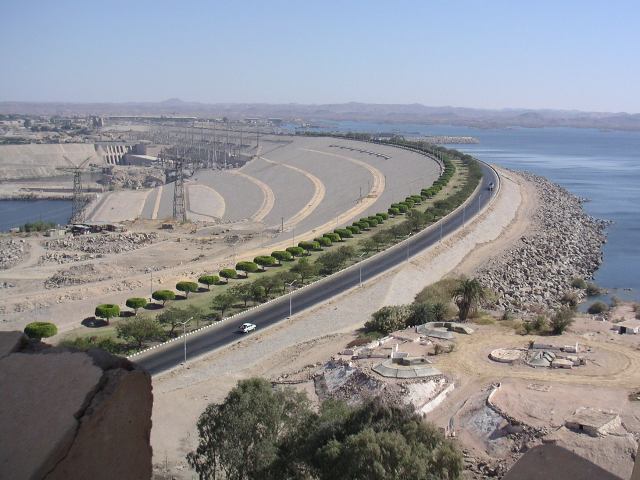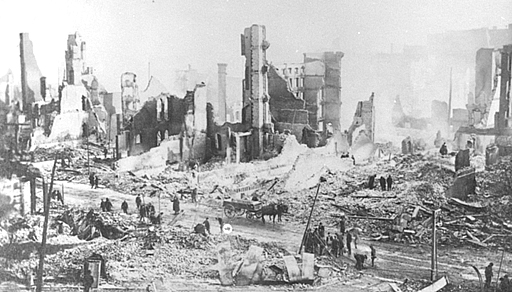|
Anaïs Allard-Rousseau
Anaïs Allard-Rousseau (, Allard; October 31, 1904 – February 15, 1971) was a Canadian educator and social activist living in Quebec. Biography Anaïs Allard was born in Nicolet, Quebec, Sainte-Monique de Nicolet. She was the sister of Jean Victor Allard. She studied music, education, philosophy and botany. In 1926, she married Arthur Rousseau, mayor of Trois-Rivières, and settled in Trois-Rivières. In 1942, she founded Les Rendez-vous artistiques, a concert society, and established the Club André-Mathieu, a series of concerts for young people. In 1949, she helped found the (JMC); she served as its president from 1954 to 1956 and was delegate for the JMC to various international conventions. From 1952 to 1955, she was vice-president of the international federation of the Jeunesses Musicales International, Jeunesses Musicales. She taught courses in music and fine arts at the École normale du Christ-Roi, the Centre d'études universitaires and the Université du Québec à ... [...More Info...] [...Related Items...] OR: [Wikipedia] [Google] [Baidu] |
Quebec
Quebec is Canada's List of Canadian provinces and territories by area, largest province by area. Located in Central Canada, the province shares borders with the provinces of Ontario to the west, Newfoundland and Labrador to the northeast, New Brunswick to the southeast and a coastal border with the territory of Nunavut. In the south, it shares a border with the United States. Between 1534 and 1763, what is now Quebec was the List of French possessions and colonies, French colony of ''Canada (New France), Canada'' and was the most developed colony in New France. Following the Seven Years' War, ''Canada'' became a Territorial evolution of the British Empire#List of territories that were once a part of the British Empire, British colony, first as the Province of Quebec (1763–1791), Province of Quebec (1763–1791), then Lower Canada (1791–1841), and lastly part of the Province of Canada (1841–1867) as a result of the Lower Canada Rebellion. It was Canadian Confederation, ... [...More Info...] [...Related Items...] OR: [Wikipedia] [Google] [Baidu] |
Order Of Canada
The Order of Canada () is a Canadian state order, national order and the second-highest Award, honour for merit in the system of orders, decorations, and medals of Canada, after the Order of Merit. To coincide with the Canadian Centennial, centennial of Canadian Confederation, the three-tiered order was established in 1967 as a fellowship recognizing the outstanding merit or distinguished service of Canadians who make a major difference to Canada through lifelong contributions in every field of endeavour, as well as efforts by non-Canadians who have made the world better by their actions. Membership is accorded to those who exemplify the order's Latin motto, , meaning "they desire a better country", a phrase taken from Hebrews 11:16. The three tiers of the order are Companion, Officer and Member. Specific people may be given extraordinary membership and deserving non-Canadians may receive honorary appointment into each grade. , the reigning Canadian monarch, is the order's sov ... [...More Info...] [...Related Items...] OR: [Wikipedia] [Google] [Baidu] |
Canadian Women Activists
Canadians () are people identified with the country of Canada. This connection may be residential, legal, historical or cultural. For most Canadians, many (or all) of these connections exist and are collectively the source of their being ''Canadian''. Canada is a multilingual and multicultural society home to people of groups of many different ethnic, religious, and national origins, with the majority of the population made up of Old World immigrants and their descendants. Following the initial period of French and then the much larger British colonization, different waves (or peaks) of immigration and settlement of non-indigenous peoples took place over the course of nearly two centuries and continue today. Elements of Indigenous, French, British, and more recent immigrant customs, languages, and religions have combined to form the culture of Canada, and thus a Canadian identity and Canadian values. Canada has also been strongly influenced by its linguistic, geographic, an ... [...More Info...] [...Related Items...] OR: [Wikipedia] [Google] [Baidu] |
1971 Deaths
* The year 1971 had three partial solar eclipses (Solar eclipse of February 25, 1971, February 25, Solar eclipse of July 22, 1971, July 22 and Solar eclipse of August 20, 1971, August 20) and two total lunar eclipses (February 1971 lunar eclipse, February 10, and August 1971 lunar eclipse, August 6). The world population increased by 2.1% this year, the highest increase in history. Events January * January 2 – 1971 Ibrox disaster: During a crush, 66 people are killed and over 200 injured in Glasgow, Scotland. * January 5 – The first ever One Day International cricket match is played between Australia and England at the Melbourne Cricket Ground. * January 8 – Tupamaros kidnap Geoffrey Jackson, British ambassador to Uruguay, in Montevideo, keeping him captive until September. * January 9 – Uruguayan president Jorge Pacheco Areco demands emergency powers for 90 days due to kidnappings, and receives them the next day. * January 12 – The landmark United States televis ... [...More Info...] [...Related Items...] OR: [Wikipedia] [Google] [Baidu] |
1904 Births
Events January * January 7 – The distress signal ''CQD'' is established, only to be replaced 2 years later by ''SOS''. * January 8 – The Blackstone Library is dedicated, marking the beginning of the Chicago Public Library system. * January 12 – The Herero Wars in German South West Africa begin. * January 17 – Anton Chekhov's last play, ''The Cherry Orchard'' («Вишнëвый сад», ''Vishnevyi sad''), opens at the Moscow Art Theatre directed by Constantin Stanislavski, 6 month's before the author's death. * January 23 – The Ålesund fire destroys most buildings in the town of Ålesund, Norway, leaving about 10,000 people without shelter. * January 25 – Halford Mackinder presents a paper on "The Geographical Pivot of History" to the Royal Geographical Society of London in which he formulates the Heartland Theory, originating the study of geopolitics. February * February 7 – The Great Baltimore Fire in Baltimore, Maryland, destroys over 1,500 build ... [...More Info...] [...Related Items...] OR: [Wikipedia] [Google] [Baidu] |
Martinique
Martinique ( ; or ; Kalinago language, Kalinago: or ) is an island in the Lesser Antilles of the West Indies, in the eastern Caribbean Sea. It was previously known as Iguanacaera which translates to iguana island in Carib language, Kariʼnja. A part of the French West Indies (Antilles), Martinique is an Overseas departments and regions of France, overseas department and region and a single territorial collectivity of France. It is a part of the European Union as an outermost region within the special territories of members of the European Economic Area, and an associate member of the Caribbean Community, CARICOM, the Organization of Eastern Caribbean States (OECS), the Association of Caribbean States (ACS), and the Economic Commission for Latin America and the Caribbean (ECLAC) but is not part of the Schengen Area or the European Union Customs Union. The currency in use is the euro. It has been a UNESCO Biosphere Reserve since 2021 for its entire land and sea territory. In ... [...More Info...] [...Related Items...] OR: [Wikipedia] [Google] [Baidu] |
Nicolet, Quebec
Nicolet () is the county seat of Nicolet-Yamaska Regional County Municipality, Quebec, Canada. The population as of the Canada 2016 Census was 8,169. It is the seat of the Roman Catholic Diocese of Nicolet. The residents of the town pronounce the final "t" in Nicolet, but people outside of the region do not. History The town took its name from Jean Nicolet, a French explorer and clerk of the Company of One Hundred Associates, who explored the Great Lakes region west to Wisconsin. Despite never having lived there, he explored the area during the seven years he lived in Trois-Rivières. The area was originally settled by the Abenaki tribe, who knew it as ''Pithigan'' or ''Pithiganek'', meaning "entrance". French colonial settlement of Nicolet area began in the late 17th century, with Pierre Monet de Moras constructing a seigneurial manor on what is now known as Moras Island. Rights to the territory of Nicolet were accorded in 1672 by Jean Talon, passing through several hand ... [...More Info...] [...Related Items...] OR: [Wikipedia] [Google] [Baidu] |
Fort-de-France
Fort-de-France (, , ; ) is a Communes of France, commune and the capital city of Martinique, an overseas department and region of France located in the Caribbean. History Before it was ceded to France by Spain in 1635, the area of Fort-de-France was known as Iguanacaera, which translates to "Iguana Island" in the indigenous Carib language, Kariʼnja language. In 1638, Jacques Dyel du Parquet (1606–1658), nephew of Pierre Belain d'Esnambuc and first governor of Martinique, decided to have Fort Saint Louis built to protect the city against enemy attacks. The fort was soon destroyed, and rebuilt in 1669, when Louis XIV of France, Louis XIV appointed the Marquis of Baas as governor general. Under his orders and those of his successors, particularly the Charles de Courbon de Blénac, Count of Blénac, the fort was built with a Vauban design. In the 1680s, the area was settled and became the French colonial capital in the French West Indies, Caribbean and the French colonization of ... [...More Info...] [...Related Items...] OR: [Wikipedia] [Google] [Baidu] |
The Canadian Encyclopedia
''The Canadian Encyclopedia'' (TCE; ) is the national encyclopedia of Canada, published online by the Toronto-based historical organization Historica Canada, with financial support by the federal Department of Canadian Heritage and Society of Composers, Authors and Music Publishers of Canada. Compiled by more than 5,000 scholars and specialists, the publication is a non-partisan, non-political initiative by a not-for-profit organization without political or governmental ties. First published in 1985, the consistently updated version has been available for free online in both Canadian English, English and Canadian French, French since 2001. The physical copy and website includes "articles on Canadian biographies and places, history, the Arts, as well as First Nations, science and Canadian innovation." , over 700,000 volumes of the print version of ''TCE'' have been sold and over 6 million people visit ''TCE'''s website yearly. The encyclopedia website consists of more than 25,000 ... [...More Info...] [...Related Items...] OR: [Wikipedia] [Google] [Baidu] |



